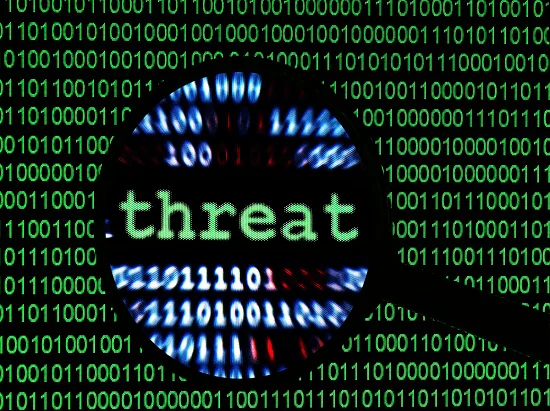Relying on reactive solutions is never a smart approach to any given situation or environment. This is especially true in todays digital world where there is an onslaught of tricks, traps, and pitfalls. Remember: threats dont sleep and neither should your threat-hunting capabilities.
Read on to get a better understanding of what cyber threat hunting truly means and find out how you can implement the right tools and solutions to protect your organization against different kinds of threats.
CYBER THREAT HUNTING?
Cyber threat hunting is a proactive solution that aims to search across networks and endpoints and flag threats that evade security controls.
Threat hunters can help you be on the lookout for indicators of compromise (IOCs) across your entire IT environment. This is done using a combination of manual and machine-assisted techniques.
The main goal of cyber threat hunting is to help your IT security team through an "assumption of breach" approach. The process includes seeking evidence that a breach has occurred. This allows your security department to quickly and effectively identify unknown threats and respond to them before they succeed in what they intend to do.

What is cyber threat hunting?
Cyber threat hunting is a proactive solution that aims to search across networks and endpoints and flag threats that evade security controls.
Threat hunters can help you be on the lookout for indicators of compromise (IOCs) across your entire IT environment. This is done using a combination of manual and machine-assisted techniques.
The main goal of cyber threat hunting is to help your IT security team through an "assumption of breach" approach. The process includes seeking evidence that a breach has occurred. This allows your security department to quickly and effectively identify unknown threats and respond to them before they succeed in what they intend to do.
Key Elements of Cyber Threat Hunting
Cyber threat hunting is designed to pinpoint any yet-to-be-discovered malicious activities and prevent them from developing into full-blown breaches. As such, four vital components should always be present in this strategy:
Methodology
If youre currently relying on reactive, ad hoc, "when we have time" solutions, then youll never have efficient threat-hunting capacities. What you need is to commit to a proactive, nonstop approach that is continuous and ever-evolving.
Technology
Having well-grounded endpoint security solutions in place, combined with automated detection gives you a solid start in cyber threat hunting. Integrating these powerful strategies through advanced technologies allows you to better find anomalies, unusual patterns, and other traces of attackers.
Highly skilled, dedicated personnel
Threat hunters—also known as cybersecurity threat analysts—are natural in utilizing relentless aspiration. Your appointed threat hunters should have intuitive problem-solving forensic capabilities and know how to go on the offensive to efficiently uncover and mitigate hidden threats.
Threat intelligence
Threat hunters need to have access to information, such as advanced threat indicators that can help identify malicious IOCs, as well as attack classifications for malware and threat group recognition. This kind of evidence-based global intelligence from experts across the globe provides you with the opportunity to expedite the hunt for already existing IOCs.
Steps to an Effective Cyber Threat Hunting
Successful cyber threat hunting is composed of five essential processes. These steps include:
Hypothesis
Threat hunters start with a hypothesis or a statement about their ideas of what threats might already be in your environment and how to go about uncovering them. Aside from factoring in a suspected attackers tactics, techniques, and procedures, threat hunters also make use of the following to come up with a logical approach to detection:
- threat intelligence
- environmental knowledge
- own experience and creativity
Collect and process intelligence and data
Cyber threat hunting requires quality intelligence and data. It also calls for a plan for acquiring, centralizing, and processing data, which can be supported with a security information and event management (SIEM) product. This software can provide insight and a log of activities in your IT environment.
Trigger
Triggers could be the hypothesis itself when threat hunters are prompted to launch an investigation of a particular system or specific area of a network through advanced detection tools.
Investigation
Endpoint detection and response is an example of investigative techniques that can help threat hunters look for potentially malicious anomalies in your network.
Response/Resolution
Collected data from confirmed malicious activity can be recorded into automated security technology. This can be used to respond, remediate and mitigate threats, as well as to improve your security against similar future attacks. Some of the actions done in this phase include:
- Removing malware files
- Restoring modified or deleted files to their original state
- Updating firewall /IPS rules
- Deploying security patches
- Changing system configurations
Benefits of Automation in Cyber Threat Hunting
Automating your manual workloads gives you the power to keep up with attacks and help your threat hunters to better use their resources. Here are some more of the advantages you can get when you automate your cyber threat-hunting strategies:
- It greatly minimizes the amount of time required for data collection
- It trims down the threat noise by quickly sorting the levels of threats
- Automated responses can fight off the smaller, more routine attacks
A well-founded cyber threat-hunting approach allows you to minimize the impact of security breaches. This is another security solution that Xcitium can help you with. In addition to our wide range of cybersecurity products and services, we also have a free Compromise Assessment tool that can help you find threats and determine if your endpoints are at risk.
